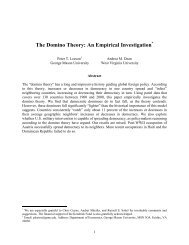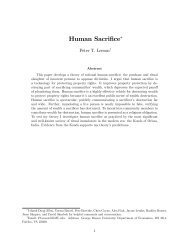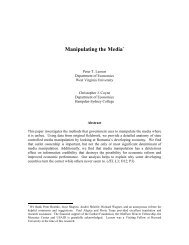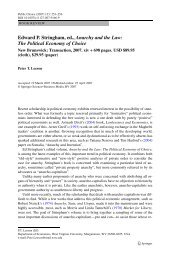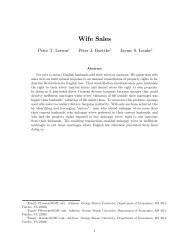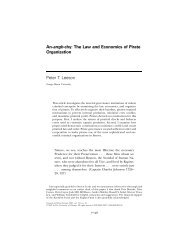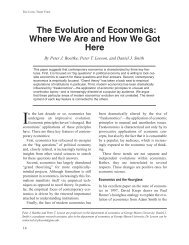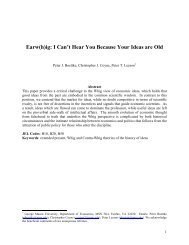The Democratic Domino Theory: An Empirical Investigation
The Democratic Domino Theory: An Empirical Investigation
The Democratic Domino Theory: An Empirical Investigation
Create successful ePaper yourself
Turn your PDF publications into a flip-book with our unique Google optimized e-Paper software.
540 PETER T. LEESON AND ANDREA M. DEAN<br />
FIGURE 1<br />
Continued<br />
neighbors, controlling only for island status. Table 1 contains<br />
our results using our longest sample, which covers<br />
the years between 1851 and 2001. <strong>The</strong> left panel of this<br />
table presents our results using the SAR model, and the<br />
right panel presents our results using the SEM model. In<br />
both panels the first column contains this stripped-down<br />
specification.<br />
<strong>The</strong> spatial coefficients in both models are highly<br />
significant, confirming the strong presence of spatial dependence<br />
in changes in democracy between geographic<br />
neighbors suggested by Figure 1. Unadjusted, a country,<br />
i, whose geographic neighbors on average experience<br />
a one-unit larger increase in democracy than the geographic<br />
neighbors of some other country, j, experiences



